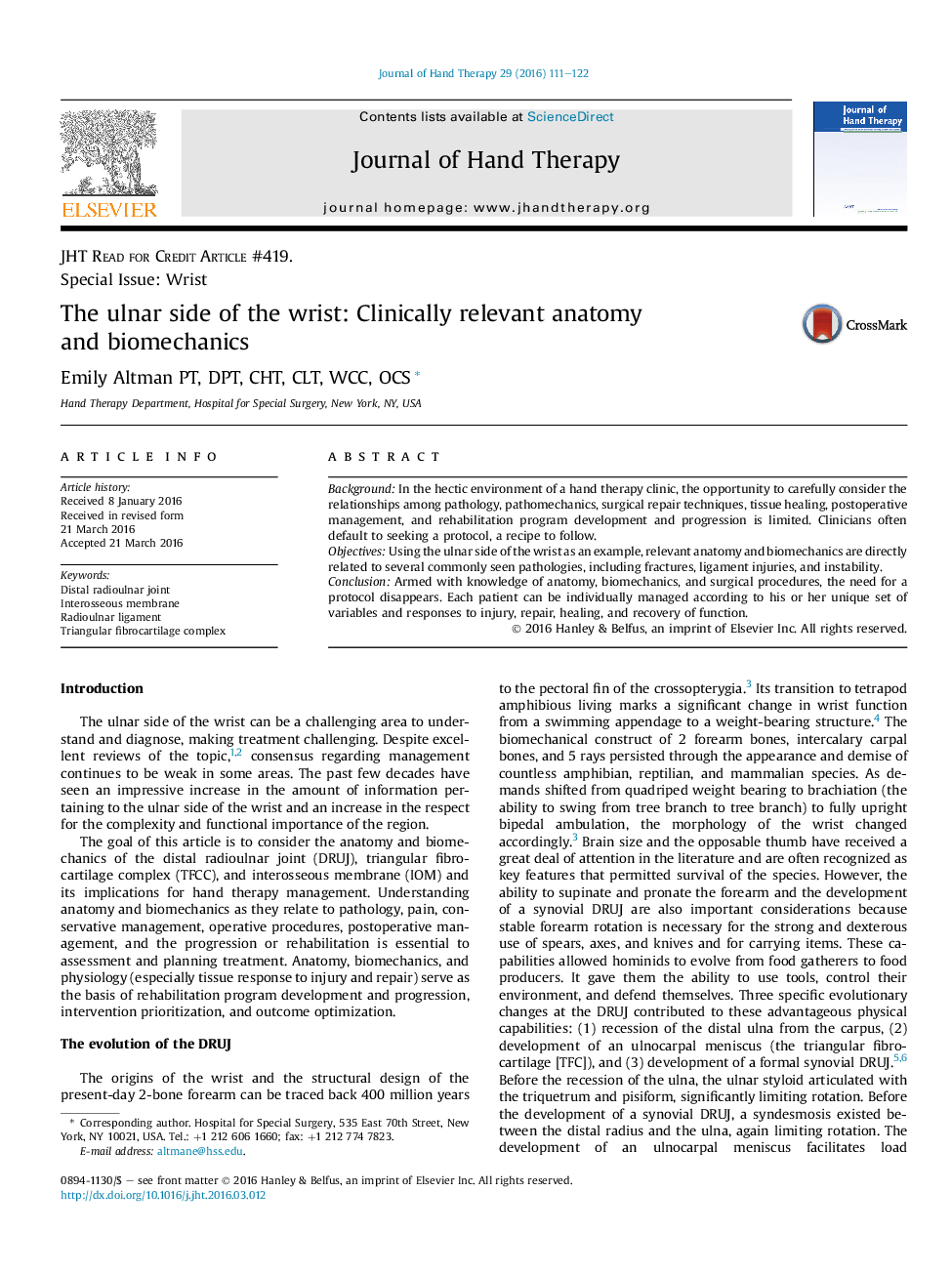| Article ID | Journal | Published Year | Pages | File Type |
|---|---|---|---|---|
| 2690958 | Journal of Hand Therapy | 2016 | 12 Pages |
BackgroundIn the hectic environment of a hand therapy clinic, the opportunity to carefully consider the relationships among pathology, pathomechanics, surgical repair techniques, tissue healing, postoperative management, and rehabilitation program development and progression is limited. Clinicians often default to seeking a protocol, a recipe to follow.ObjectivesUsing the ulnar side of the wrist as an example, relevant anatomy and biomechanics are directly related to several commonly seen pathologies, including fractures, ligament injuries, and instability.ConclusionArmed with knowledge of anatomy, biomechanics, and surgical procedures, the need for a protocol disappears. Each patient can be individually managed according to his or her unique set of variables and responses to injury, repair, healing, and recovery of function.
